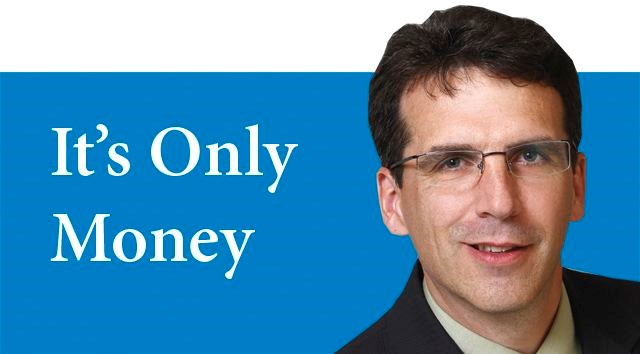The year 2020 won't be like the year 2008, thanks to the year 1992, because... standards.
And if you were a banker or a savvy onlooker back in 1992, you probably already know what I'm talking about.
1990
The previous night I had submitted my very first work up on a loan in my new job as a commercial banking trainee.
The credit risk manager was a crusty old banker who had aptly been nicknamed "Switchblade" for the way he delighted in shreding the written paper applications we had poured our efforts into.
He was from the old days when it was standard for a branch manager to have a whisky bottle in his desk drawer, right next to a loaded pistol, both of which he knew how to use. He occasionally had the whisky on his breath.
Nobody asked about the gun.
I was standing at the paper folder containing the daily internal circulating memos we were all required to read, when Switchblade approached me asking why the #%*% he should even consider approving the piece of %#* loan application I had presented to him.
My reply instinctively spat back with huffy college pride: "Because we have an undoubted personal guarantee from the owners."
Switchblade folded back at my use of the magic word, thumbing through the file to look at the personal net worth statement. He didn't say a word, but the file was sitting on my desk a few minutes later with his endorsement at the bottom of the application.
"Undoubted." It was a word we threw around in those days in an effort to end all further argument about credit decisions.
It meant the owner had both the capacity and the character to support his failing business and cash flow to tidy up the loan personally should the case require it, making up for other weaknesses in the application.
Canadian-style banking crisis
It was only a matter of time, I suppose, before some larger-than-life iconic character took advantage of this old school method of lending.
In the '80s and early '90s one such family, headed by a well-known undoubted real estate developer from Eastern Canada, convinced bankers all over the world, including all the big banks in Canada, to lend them billions of dollars, for simultaneous projects which were variously drowning.
This included some serious real estate, such as the World Trade Center in New York, Canary Warf in London and First Canadian Place in Toronto, among others.
These guys were huge. Huger-than-Trump huge.
So large in fact, that the banks stopped asking questions. Much of their financial hubris was updrafted by the willingness of banks to dish out loans without the usual checks and balances required of most borrowers.
Abandoning standard lending practice, they lent truckloads on the family's reputation alone.
When it all collapsed in March 1992, a bundle of world-wide banks were struggling under the weight of some $20 billion dollars in debt.
It was not enough to sink them, but enough to take on water that couldn't be ignored. And it hurt across the board. That year at RBC we received no Christmas bonus and the next year no raise, followed by a year with a vexing round of layoffs. Even at head office they lost their bonuses and raises - avoiding a juxtaposition that would haunt American bankers a couple of decades later.
But there were no bailouts.
And changes at my employer did not result from government or regulatory oversight.
Change occurred from pressure we put on ourselves to never have a day like that again.
Austerity and corporate self-reflection rendered wisdom.
Toil and trouble taught our corporate real estate guru's that: "In real estate lending, we just don't earn enough in the good years to make up for the losses in the bad years."
This pain inspired internal regulation which has served us well in real estate cycles since then, including a list of things for which no exception could ever be granted. Period.
Real estate project financing today has significant checks and balances to help mitigate risk.
This includes, but is not limited to: feasibility studies, appraisals, required pre-selling of portions of projects and sufficiently verified owner's equity.
We also require additional cash or near-cash resources in the hands of the owner to satisfy a margin of error and cash calls in the event of cost over-runs. The owner's down payment goes in first.
No bank draws are provided until the bank is satisfied at each step that the project is progressing on target.
We also set absolute limits on loans to connected entities, sharing (syndicating) risks with other banks once size restrictions are about to be breached. We place caps on loans to the same sector on a bank-wide basis.
And of great interest in today's low-rate environment, we test loan debt service capacity of borrowers against potential increases in interest rates over the life of the loan. So if rates go up, we have already pre-tested the loan against the higher rate beforehand.
So, as I say to my clients today, if a small financial institution is inviting you to bring your deposits over, offering significantly higher interest rates than the market, ask yourself why. What sorts of loans are they making with your money? Are their risk management policies sufficiently sound?
Mark Ryan is an investment advisor with RBC Dominion Securities Inc. (a member of the Canadian Investor Protection Fund). This article is for information purposes only. Please consult with a professional advisor before taking any action based on information in this article. Ryan can be reached at mark.ryan@rbc.com.



